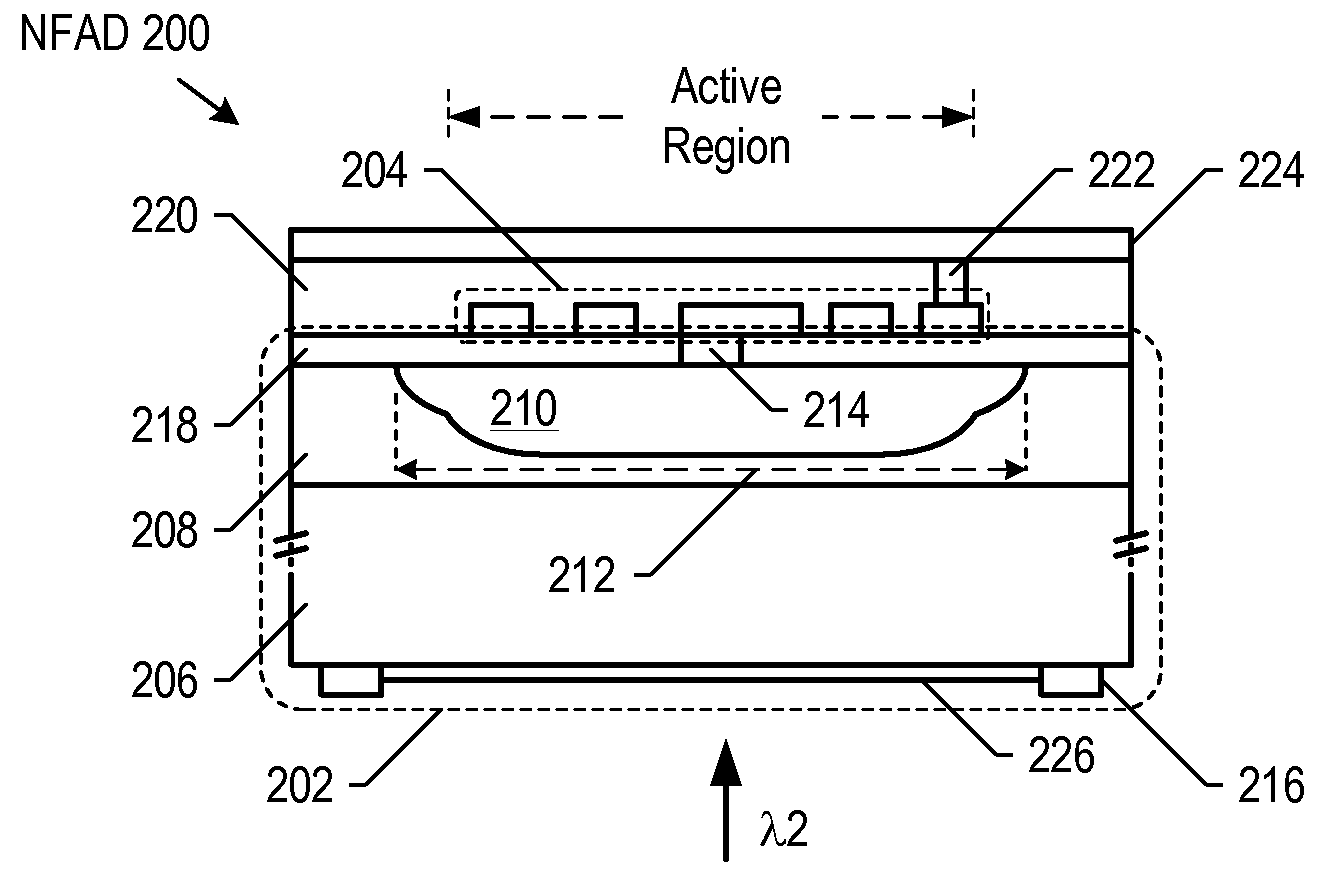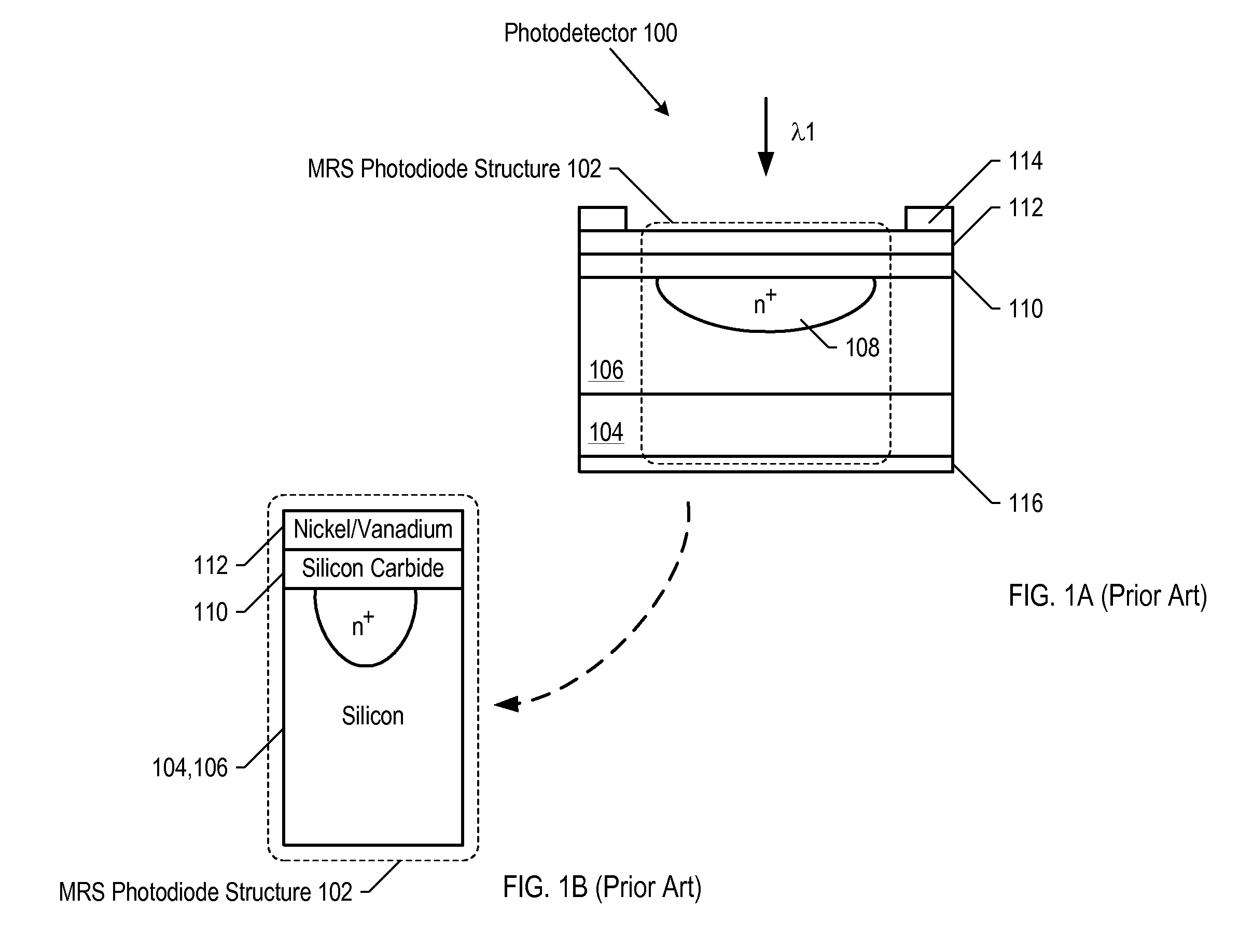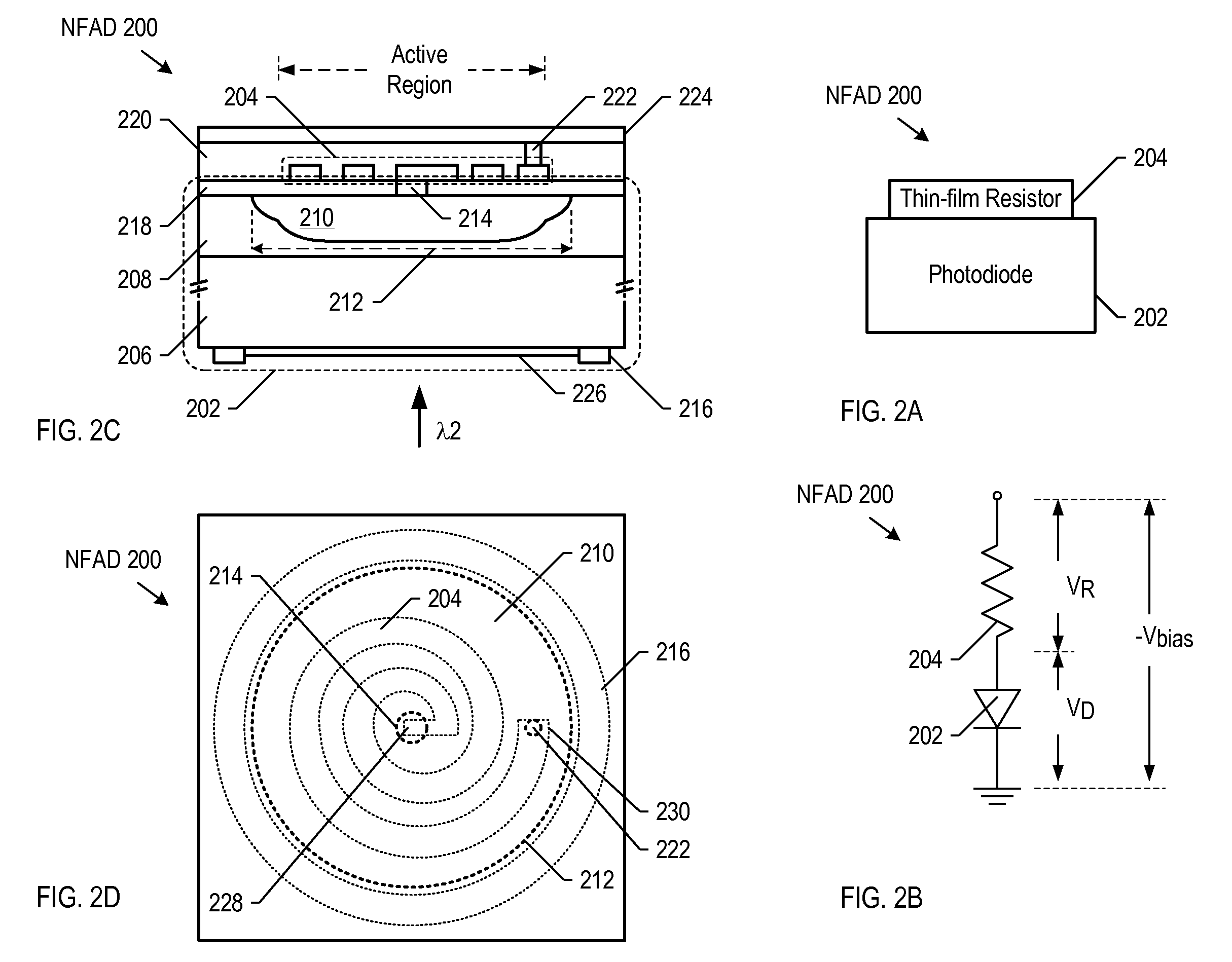Negative Feedback Avalanche Diode
a diode and negative feedback technology, applied in the field of single-photon avalanche photodetectors, can solve the problem that the diode cannot be operable for photons having wavelengths, and achieve the effect of increasing the capacitance of the photodetector structur
- Summary
- Abstract
- Description
- Claims
- Application Information
AI Technical Summary
Benefits of technology
Problems solved by technology
Method used
Image
Examples
Embodiment Construction
[0033]The following terms are defined for use in this Specification, including the appended claims:[0034]Electrically-coupled means that two elements are in either direct or indirect electrical communication. This can be via direct physical contact (e.g., a plug in an electrical outlet, etc.), via an electrically-conductive intermediate (e.g., a wire or conductive trace that interconnects the devices, etc.), or via one or more intermediate devices, etc. (e.g., resistors, capacitors, transistors, etc.).[0035]Electrically-connected means that two elements are in direct electrical contact without any intervening devices (e.g., resistors, capacitors, transistors, etc.). In other words, the point or region of contact between the two elements remains at a substantially uniform voltage for substantially any current (i.e., the two elements are “shorted” together). For the purposes of this definition, an electrically-conductive wire or trace that serves only to interconnect the two elements ...
PUM
 Login to View More
Login to View More Abstract
Description
Claims
Application Information
 Login to View More
Login to View More - R&D
- Intellectual Property
- Life Sciences
- Materials
- Tech Scout
- Unparalleled Data Quality
- Higher Quality Content
- 60% Fewer Hallucinations
Browse by: Latest US Patents, China's latest patents, Technical Efficacy Thesaurus, Application Domain, Technology Topic, Popular Technical Reports.
© 2025 PatSnap. All rights reserved.Legal|Privacy policy|Modern Slavery Act Transparency Statement|Sitemap|About US| Contact US: help@patsnap.com



